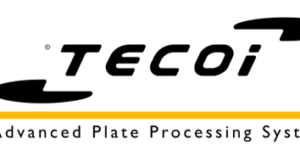The Road to Welding Automation
Why and When to Take the Journey
Posted: May 9, 2008
More companies than ever before are automating portions, if not the entirety, of their welding operations for many reasons: to address the welder shortage; improve quality; decrease waste and rework; and/or to increase productivity. However, not all companies that attempt the automation journey are successful.
In fact, those that begin without a well-thought-out roadmap risk valuable time and investments and are likely to miss the full benefits of welding automation.
On the other hand, fabricators that begin with a careful examination of their welding needs and current processes – including an accurate assessment of workflow and an evaluation of the potential return on investment (ROI) – and develop a detailed plan, with clearly established goals, are likely to achieve welding automation success.
WHAT'S THE BENEFIT?
On average, labor accounts for approximately 70 percent of any welded part's cost. An automated system can potentially reduce that cost because a robot can typically do the work of two to four people, operating without attention deficits or bad days. You cannot, however, simply purchase an automated system and let it go. A skilled welding operator is needed to program the equipment, which may involve additional training to upgrade his/her skill sets and may also require alleviating this welding operator of some existing tasks.
The proper automated system can significantly improve first-pass weld quality, reduce the need for scrapping or reworking parts, and minimize or eliminate spatter, which in turn reduces the need to apply anti-spatter or perform post-weld clean up – both labor-intensive processes. This means personnel that currently apply anti-spatter may be freed up for other, more productive uses elsewhere.
An automated system can reduce over-welding, a common and costly occurrence associated with the semi-automatic process. For example, welding operators who weld a bead that is 1/8 in too large on every pass can potentially double the cost of welding (both for labor and for filler metals), and over-welding may adversely affect the integrity of the part. Automation can prevent this problem.
Finally, robots are fast. They don't have to weld all day to be profitable; they must only weld more quickly than a manual welding operator – and they do. This fact alone increases productivity. Creating the same number of parts in a shorter time also decreases labor costs and raises profitability. While these benefits may immediately beg the question "How can our company automate?" a few questions must be answered first.
REPEAT THAT?
One of the initial things to ask when considering welding automation is: "Do we have a blueprint, preferably an electronic blueprint, of our parts?" If not, you probably won't meet the basic criterion necessary to ensure the part is repeatable – and repeatability is the key to automation.
An automated system, whether robotic or fixed, must weld in the same place every time. If a part's design is unable to hold its tolerances – if there are gap and/or fit-up issues – you will simply be automating a broken process. This, in turn, can lead to increased rework and scrap.
If you currently rely on your welding operators to compensate for fit-up issues, you will need to look upstream in the manufacturing process to ensure consistency. What processes will need to change to make sure uniform parts are sent downstream by these welding operators? Or, if vendors supply the components, can they guarantee that consistency?
ROBOTICS OR FIXED AUTOMATION?
No single automation solution is best for every company. The best solution depends on many factors, including the expected lifetime of the job, the cost of tooling involved and the flexibility offered.
Fixed automation is the most efficient and cost-effective way to weld certain components, such as those requiring simple repetitive straight welds or round welds, where the part is rotated on a lathe. If you want to redeploy the asset when the current job ends, however, a robotic welding system offers more flexibility. A robot can also hold programs for multiple jobs; so, depending on volume, it may be able to handle the tasks of several fixed-automation systems.
A certain volume of parts will justify the investment of automation for each company, and an accurate assessment of goals and workflow help determine what that volume is. If you make only small runs of parts, automation becomes more challenging. If, however, you can identify two or three components that can be automated, a robot that can be programmed to recognize those parts can offer greater flexibility and may benefit even small fabricators who may not have significant volume of a single part.
Although a robot is more expensive than a fixed-automation system, you should be sure to consider the cost of the necessary tooling before deciding between the two. Fixed automation systems can become quite expensive if extensive changes are required to retool a part to ensure it can be welded consistently.
READY TO AUTOMATE?
A streamlined workflow is one of automation's benefits. But a smooth workflow requires you to look beyond the weld cell to ensure your facility can accommodate a smooth flow of materials. For example, investing in an automated system to increase productivity that is placed in a corner where each part must be handled twice makes little sense.
You should have a dependable supply of parts to avoid moving a bottleneck from one area to another. Also remember to consider the expected cycle time of the robot. Can your personnel supply enough parts to keep up with the demand of the automated system's cycle time? If not, the supply of parts, including where they are stored and how they are moved, must be adjusted for the automation to be successful. Otherwise, a robot will sit idle waiting for components to come down the line – a costly and counterproductive state for any automated welding system.
You must have the right power and gas systems in place, or factor in the cost of implementing these systems. To move to an automated system, a facility needs a 480-volt, three-phase power supply, as well as bulk delivery of gas and wire. A gas manifold system may add to the initial cost of automation, but will minimize downtime for changing gas cylinders in the long run.
Determining who will oversee the automated system and providing training is essential. Most robot OEMs offer a weeklong training course explaining how to operate the equipment. This course, followed by a week of advanced programming, is recommended.
Because there is more to welding automation than simply purchasing a robot, partnering with a competent integrator or automation specialist can help ensure success. Your automation specialist should:
? Help determine if parts are suitable for automation, and, if not, what is required to make them suitable.
? Analyze the workflow and facility to identify potential roadblocks.
? Analyze the true costs involved, including facility updates and tooling.
? Determine the potential payback of the automation investment.
? Help identify goals and develop a precise plan and time table to achieve those goals.
? Explain automation options and help select those that best fit your needs.
? Help select a welding power source that has the flexibility to maximize travel speed, minimize spatter, eliminate over-welding, provide great arc starting characteristics and increase first-pass weld quality.
Remember, no single path to successful welding automation exists, but a well-thought-out plan that includes accurate evaluations is a good start to the journey.
Kevin Summers is the business development manager: emerging market automation for Miller Electric Mfg. Co., 1635 West Spencer Street, P.O. Box 1079, Appleton, WI 54912-1079, 920-735-4505, Fax: 920-735-4134, www.millerwelds.com/AMS.
Dan Imus is a technical field specialist and Randy Stevens is the director of business development for Tregaskiss, 2570 North Talbot Road, Windsor, ON, Canada, N0R 1L0, 519-737-3000, Fax: 519-737-1530, www.tregaskiss.com.











